As autumn transitions to winter, the temperature difference between morning and evening is significant, making it easy to catch a cold and suffer from a wind-cold common cold.
If you experience the following symptoms, you are likely suffering from a wind-cold common cold: extreme sensitivity to cold, accompanied by slight fever, no sweating, headache, body aches, nasal congestion with a heavy voice, sometimes accompanied by clear nasal discharge, itchy throat, cough with thin white phlegm, no thirst or feeling more comfortable drinking hot water, and a thin white and moist tongue coating.

In Traditional Chinese Medicine (TCM), the treatment for wind-cold common cold employs the method of “dispersing wind and cold, and using warm acrid herbs to release the exterior.” The commonly seen TCM patent medicines in pharmacies mainly include seven types: Fenghan Ganmao Keli (Wind-Cold Common Cold Granules), Ganmao Qingre Keli (Common Cold Heat Clearing Granules), Ganmao Jiedu Ling Keli (Common Cold Detox Granules), Zheng Chaihu Yin Keli (Proper Chaihu Decoction Granules), Ganmao Ruan Jiaonang (Common Cold Soft Capsules), Jingfang Keli (Jingfang Granules), and Ganqing Tang (Ganqing Syrup).
1. Fenghan Ganmao Keli
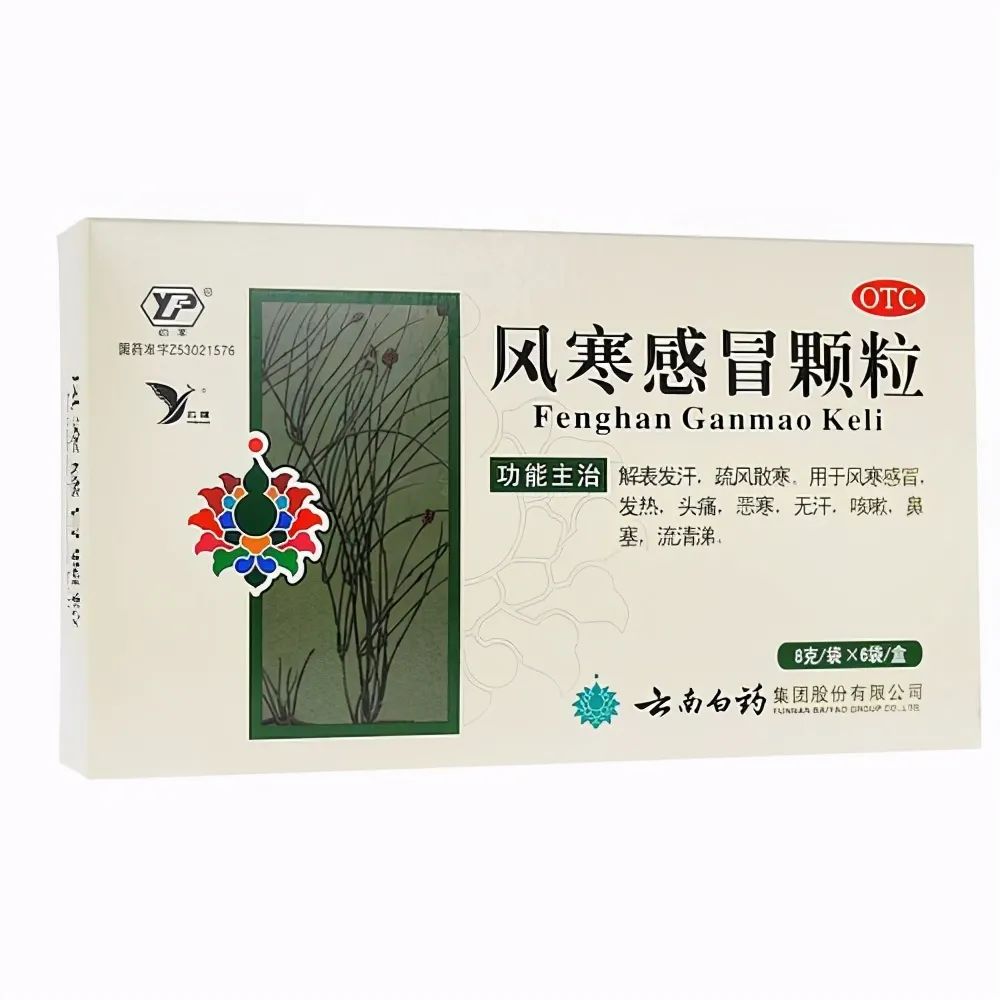
Mainly contains Mahuang (Ephedra), Gegen (Kudzu Root), Zisuye (Perilla Leaf), Fangfeng (Siler), Guizhi (Cinnamon Twig), Bai Zhi (Angelica Dahurica), Chenpi (Dried Tangerine Peel), Kuxingren (Bitter Apricot Seed), Jiegeng (Platycodon Root), Gancao (Licorice), and Ganjing (Dried Ginger). It has the effects of releasing the exterior and inducing sweating, dispersing wind and cold. It is mainly used for patients with wind-cold common cold, fever, headache, chills, no sweating, cough, nasal congestion, and clear nasal discharge.
2. Ganmao Qingre Keli
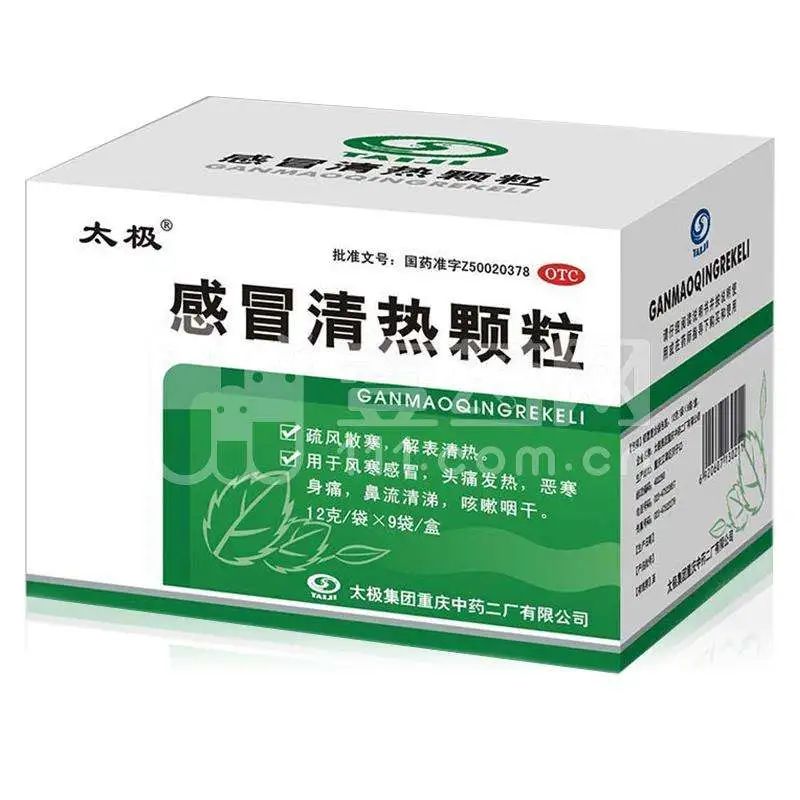
Mainly contains Jingjue Sui (Schizonepeta), Bohua (Mint), Fangfeng (Siler), Chaihu (Bupleurum), Zisuye (Perilla Leaf), Gegen (Kudzu Root), Jiegeng (Platycodon Root), Kuxingren (Bitter Apricot Seed), Bai Zhi (Angelica Dahurica), Kudingcha (Bitter Tea), and Lugen (Reed Rhizome). The formula features Jingjue Sui which is aromatic and disperses wind, making it the monarch herb; Fangfeng and Zisuye disperse wind and cold, while Bohua and Chaihu disperse wind and clear heat, Gegen releases muscle and reduces fever, and promotes fluid production to relieve thirst, serving as ministerial herbs; Jiegeng and Kuxingren clear lung qi, transform phlegm, and stop cough, while Bai Zhi releases the exterior and disperses wind, opens the orifices and alleviates pain, Kudingcha clears heat and detoxifies, and Lugen clears heat and generates fluids to relieve thirst, serving as assistant herbs. The combination of these herbs has the effects of dispersing wind and cold, and clearing heat. It is mainly used for patients with wind-cold common cold, headache, fever, chills, body aches, nasal discharge, cough, and dry throat.
3. Ganmao Jiedu Ling Keli
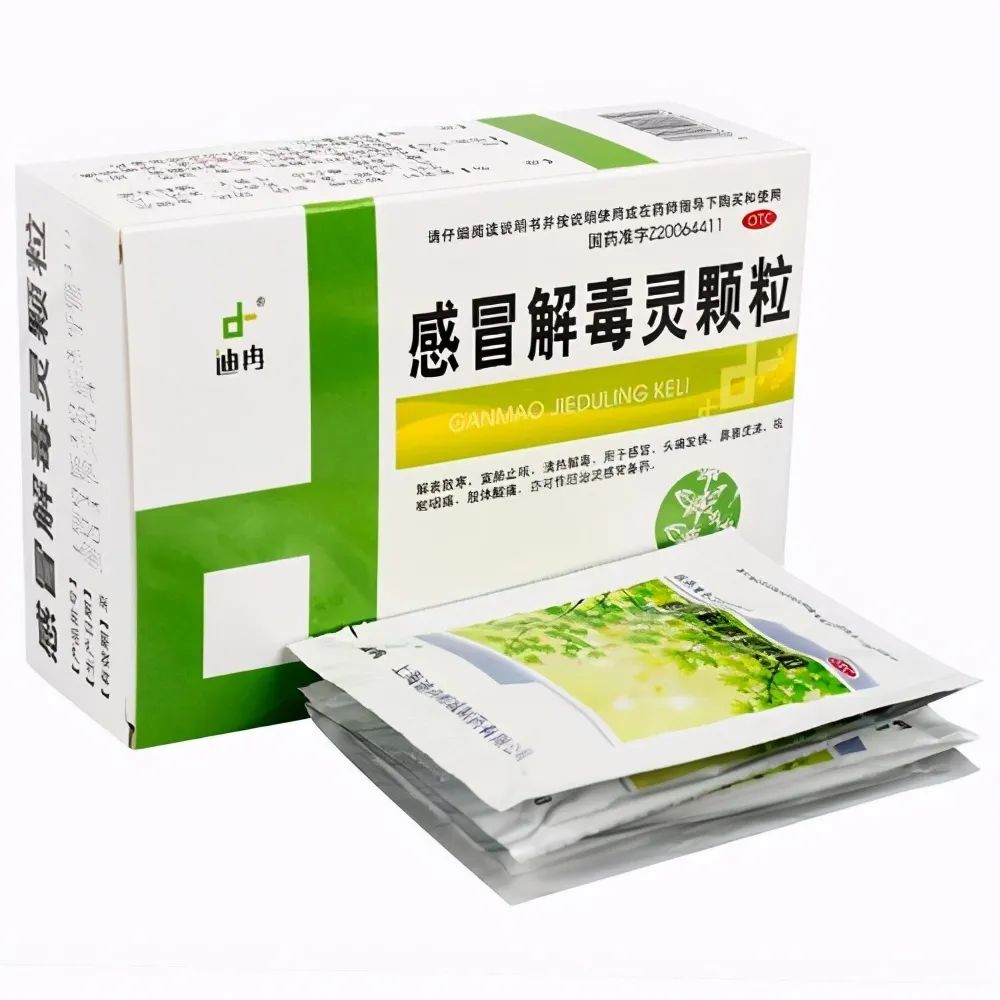
Mainly contains Zisuzizi (Perilla Seed), Qianhu (Hogfennel), Fangfeng (Siler), Jinyinhu (Lonicera), Lianqiao (Forsythia), Mai Dong (Ophiopogon), Banlangen (Isatis Root), Kuxingren (Bitter Apricot Seed), Qianghuo (Notopterygium), Chuanxiong (Sichuan Lovage), Niubangzi (Burdock Seed), Chenpi (Dried Tangerine Peel), and Sangbai Pi (Mulberry Root Bark). It has the effects of releasing the exterior, dispersing cold, clearing the lungs, and stopping cough. It is mainly used for patients with common cold, headache, fever, nasal congestion, runny nose, cough, and sore throat, and body aches.
4. Zheng Chaihu Yin Keli
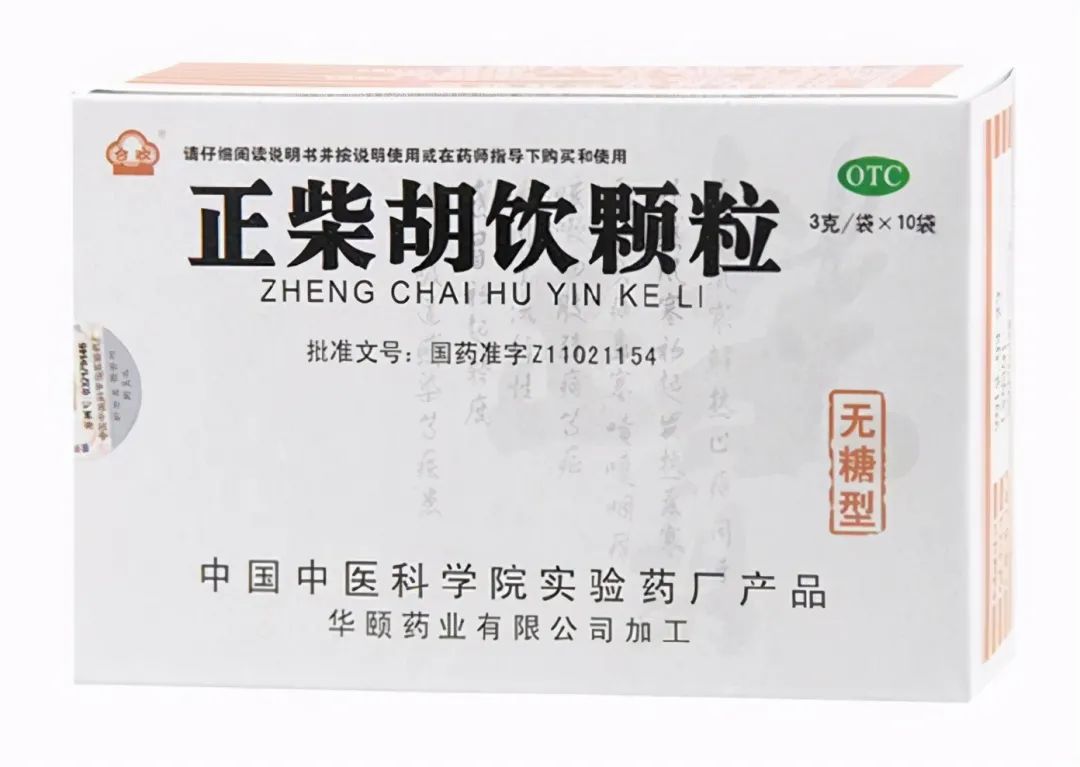
Mainly contains Chaihu (Bupleurum), Chenpi (Dried Tangerine Peel), Fangfeng (Siler), Chisha (Red Peony), Gancao (Licorice), and Shengjiang (Fresh Ginger). In this formula, Chaihu disperses and reduces fever, serving as the monarch herb. Fangfeng releases the exterior and disperses wind, alleviating dampness and pain; Shengjiang induces sweating and releases the exterior, warming the lungs and stopping cough, serving as ministerial herbs. Chisha clears heat and cools the blood; Chenpi regulates qi and strengthens the spleen, serving as assistant herbs. Gancao harmonizes the other herbs, serving as the envoy herb. The entire formula has the effects of dispersing wind-cold, relieving heat, and alleviating pain. It is mainly used for the initial stage of wind-cold invasion: fever, chills, no sweating, headache, nasal congestion, sneezing, itchy throat, cough, and body aches; also for the initial stage of influenza and mild upper respiratory infections with the above symptoms.
5. Ganmao Ruan Jiaonang
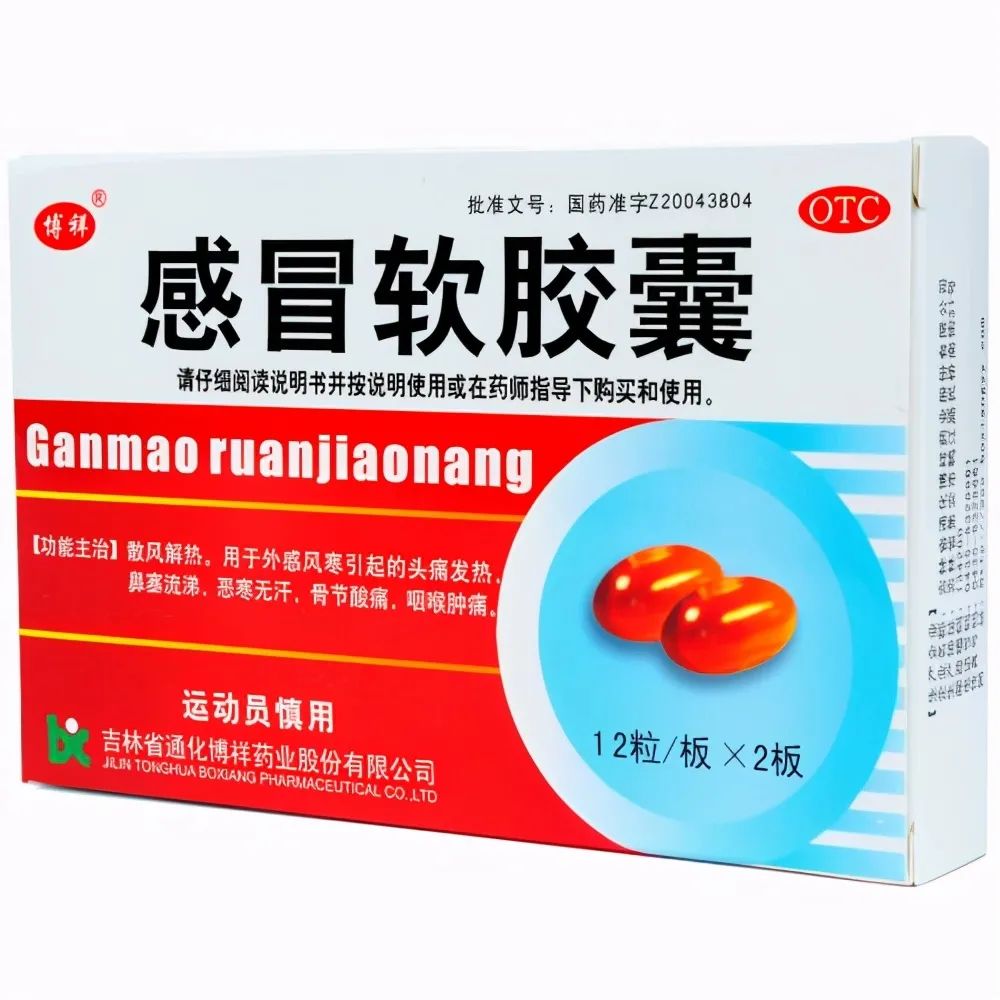
Mainly contains Qianghuo (Notopterygium), Mahuang (Ephedra), Guizhi (Cinnamon Twig), Jingjue Sui (Schizonepeta), Fangfeng (Siler), Bai Zhi (Angelica Dahurica), Chuanxiong (Sichuan Lovage), Shichangpu (Acorus), Gegen (Kudzu Root), Bohua (Mint), Kuxingren (Bitter Apricot Seed), Danggui (Angelica Sinensis), Huangqin (Scutellaria), and Jiegeng (Platycodon Root). It has the effects of dispersing wind and relieving heat. It is mainly used for patients with headache and fever caused by wind-cold invasion, nasal congestion, runny nose, chills without sweating, joint pain, and sore throat.
6. Jingfang Keli
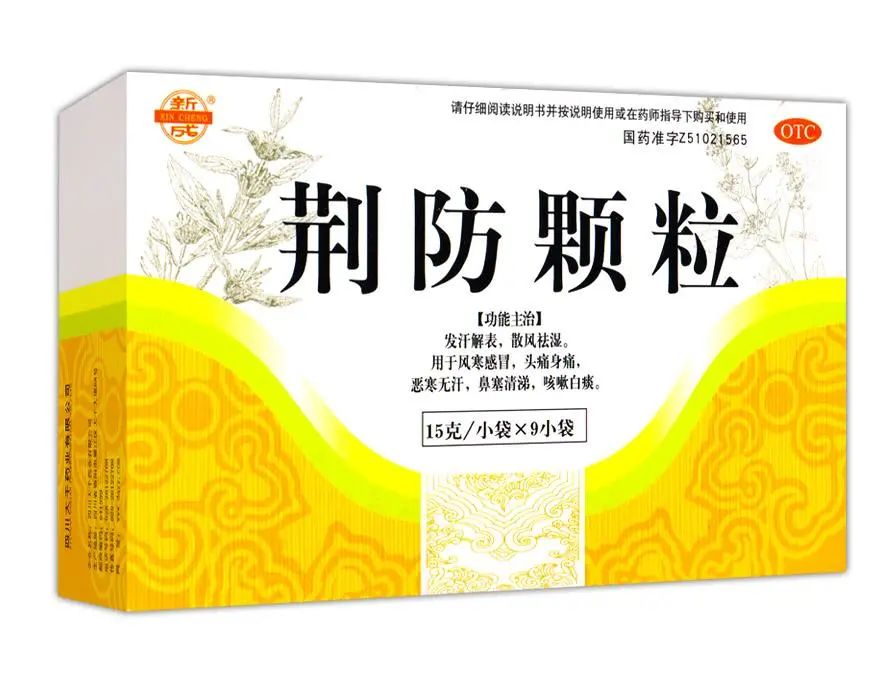
Mainly contains Jingjue Sui (Schizonepeta), Fangfeng (Siler), Qianghuo (Notopterygium), Duhuo (Angelica Pubescens), Chaihu (Bupleurum), Qianhu (Hogfennel), Chuanxiong (Sichuan Lovage), Zhike (Bitter Orange), Fuling (Poria), Jiegeng (Platycodon Root), and Gancao (Licorice). It has the effects of inducing sweating and releasing the exterior, dispersing wind and eliminating dampness. It is mainly used for patients with wind-cold common cold, headache, body aches, chills without sweating, nasal congestion with clear discharge, and cough with white phlegm.
7. Ganqing Tang
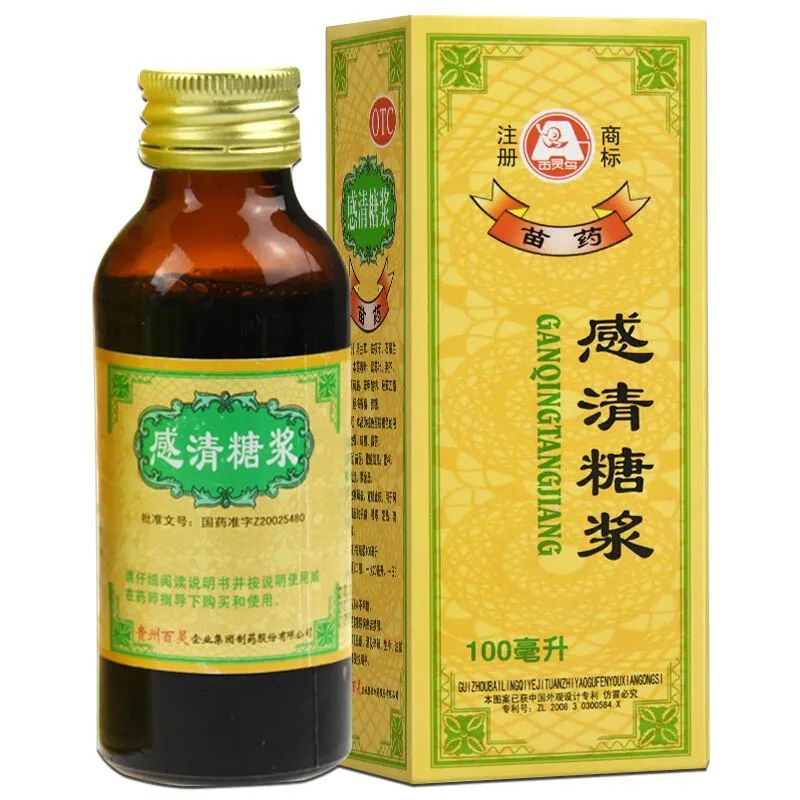
Mainly contains Malancao (Mallow), Tiekuizi (Ironwood), Shidiaolan (Stone Hanging Orchid), Lanbuzheng (Blue Cloth), Mufurongye (Hibiscus Leaf), Zisu (Perilla), Jingjue Sui (Schizonepeta), Bohua (Mint), Benzoic Acid Sodium, Hydroxybenzoate, Citric Acid, Yangmei Fragrance, and Sucrose. It has the effects of dispersing cold and releasing the exterior, clearing the lungs, and stopping cough. It is mainly used for patients with headache, chills, fever, runny nose, and cough caused by wind-cold common cold.
Note: Some text and image resources in this article are sourced from the internet. The purpose of reposting this article is to convey more information. If there are any errors in source attribution or infringement of your legal rights, please immediately leave a message in the background to notify us. If the situation is true, we will delete it as soon as possible and apologize to you.Previous Highlights: Numbness in hands and feet? Targeted treatment is key. TCM has an ancient formula – Xibixiao Decoction, which is very effective for treating osteoarthritis of the knee! What to do if your knees hurt in cold weather? Effective TCM methods to protect the knees and relieve pain.

